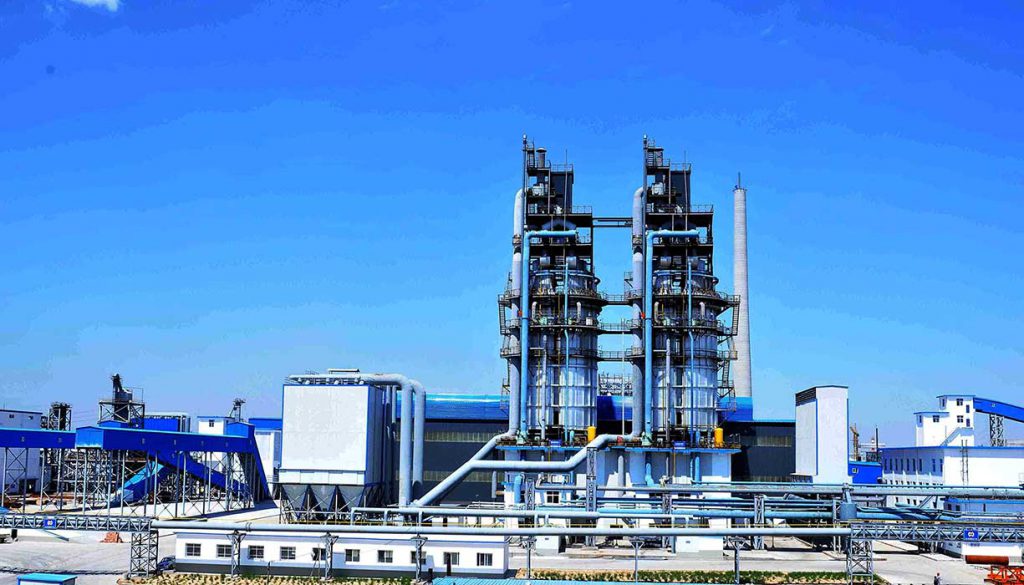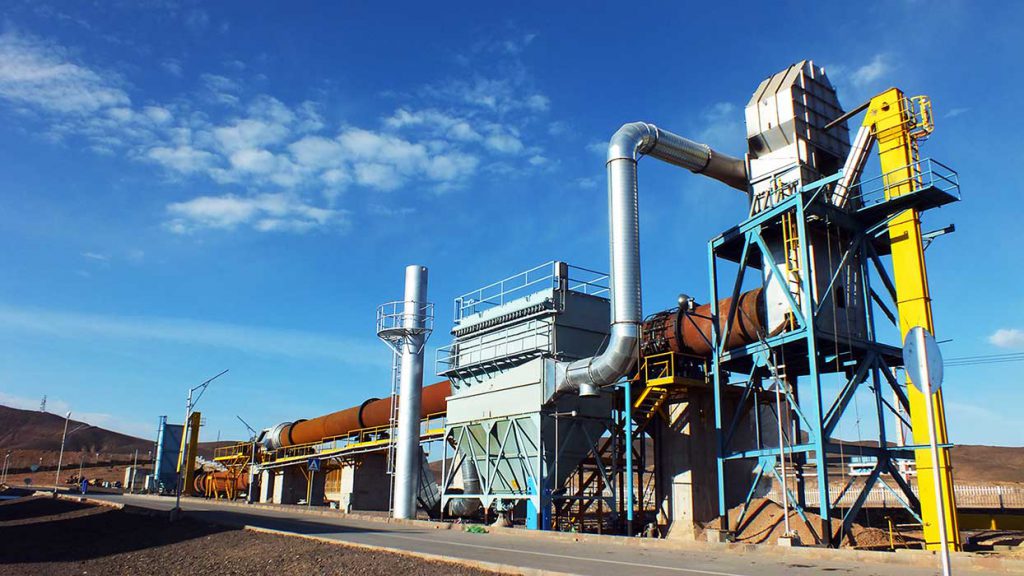Minerals Calcination and Roasting
Introduction
Calcination (Thermal decomposition) is a process that transforms carbonate minerals such as dolomite, limestone and etc. to oxide minerals. Lime and cement industries, plaster production plants, glass industry, iron and steel production units, refractory, magnesium and sugar industries are the main users of calcination processes. There are many kinds of kilns that are used for minerals calcination. Rotary and shaft kilns are common equipment for this purpose.
Roasting processes are used for producing oxide minerals from sulfide minerals like: lead, zinc and copper sulfide ores. Roasting is done in rotary or fluidized bed furnaces. Fluidized bed furnace is a modern and highly efficient technology that consumes less energy than other methods.
Aramico Company is a designer and manufacturer of industrial calcination and roasting kilns. Aramico’s technical team works on optimization and designing the best conditions for minerals calcination and roasting processes using world modern technologies and could supply engineering design, manufacturing and operating of calcination and roasting systems for minerals.
Calcination and roasting systems
Calcination shaft kilns
Shaft kilns consist of three main zones due to the thermal profile: preheating zone, calcination zone and cooling zone. Among these zones, calcination zone has the greatest effect on the quality of calcined minerals. There are two main types of shaft kilns: single shaft kiln and double shaft kilns.
Single shaft kilns
There are three types of single shaft kiln include: mixed feed kilns, west kilns and westofen kiln. In mixed feed kilns different layers of minerals including mineral and solid fuel (often coal/coke) are charged to the preheat zone of the kiln and hot gas flow is passed through the minerals layers and calcination occurred. The final product is discharged from bottom part of the kiln. West kilns are used for minerals calcination using oil stream. In westofen kilns the kiln mechanism is like west kilns but number of burners and using natural gas instead of oil stream are the main differences. Energy consumption and emissions are lower in this kind of kilns.

Double shaft kilns
From 1960s the modern type of shaft kilns named double shaft kiln was designed and manufactured which has lower energy consumption and high efficiency. There are two compartments that operate with regenerative flow of reducer gas. In a consecutive cycle, process hot gas passed through the minerals move to the other compartment and help energy recovery in the first compartment of the kiln.

Calcination rotary kilns
Rotary kiln is equipment for creating a high-temperature environment in continuous processes. Usage of rotary kiln is in the cement and lime industries and extraction processes of metals. Rotary kiln’s structure is a horizontal hollow metallic cylinder which slightly rotates around its axis. According to the requested capacity of the rotary kiln and the residence time of material in the kiln, rotational speed and slope of the kiln is determined.
Rotary kiln rotates by a driver system and a burner at the end of the kiln, provides the temperature required for chemical reactions. Feed materials are moved to the bottom end of the cylinder by rotation and mixing. Kiln’s high temperature is provided by combustion of natural gas or other fuels. Hot gas flow through the cylinder increases materials temperature gradually from the beginning to the end of the kiln, during this transmission considered chemical processes are done continuously. Materials and hot gas could move in the same or different directions.


Fluidized bed furnace for minerals roasting
Roasting processes use elevated temperature and controlled kiln atmospheres to effect desired chemical reactions in the furnace charge; roasting reactions may be either endothermic or exothermic. Although many furnace technologies exist, rotary kiln and the fluidized-bed reactors are common for these applications.
Fluidized bed furnace is a continuous system in which the main product discharges from the bottom side of the furnace. Dusts are collected by cyclones and electrostatic filters. Iron, copper, zinc etc. sulfides in the form of pellets are roasted in the fluidized bed furnaces in the temperature range of 600 – 1000 . Produced SO2 gas may use in sulfuric acid production plants.